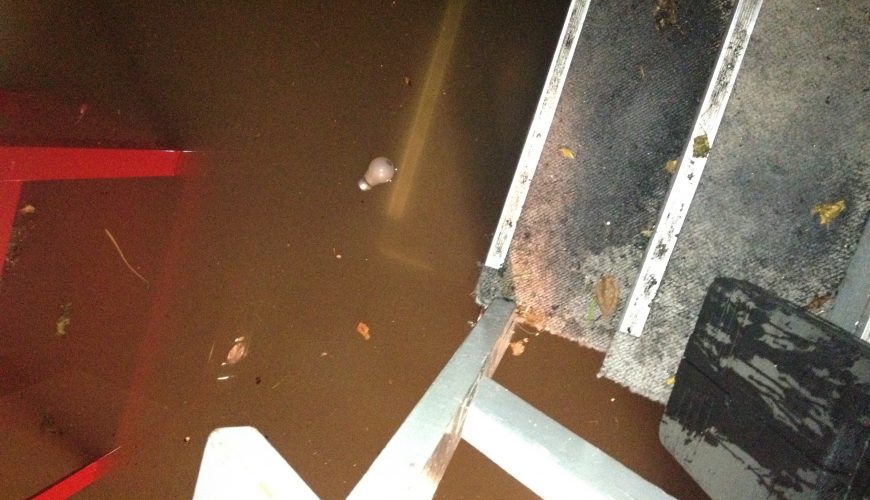
How to Prevent Your Basement From Flooding
Toronto homeowners are pretty familiar with basement flooding events. When your basement floods, you always have a price to pay. Therefore, it is essential to get acquainted with the causes of basement flooding and the preventive measures that will help you save on cash.
The position of the basements makes it prey. Since it’s below the ground, you can expect conditions like backups from storm sewers, water seeping through the basement walls, among others.
Please contact a licensed plumbing contractor to help you with the repairs and get enlightened if you face this challenge or any plumbing system problem.
Check out the tips below on ways to prevent basement flooding.
Contents
- 1 Keep Your Basement Flood Free Tip #1: Clean Your Downspouts
- 2 Keep Your Basement Flood Free Tip #2: Windows and Doors Maintenance
- 3 Keep Your Basement Flood Free Tip #3: Position the Underground Sprinkler Correctly
- 4 Keep Your Basement Flood Free Tip #4: Guard Against Freezing
- 5 Keep Your Basement Flood Free Tip #5: Ensure the Sump Pump Functions Optimally
- 6 Keep Your Basement Flood Free Tip #6: Install Backwater Valve
- 7 Keep Your Basement Flood Free Tip #7: Extend Downspouts
- 8 Keep Your Basement Flood Free Tip #8: Install Floor Drain Check Valves
Keep Your Basement Flood Free Tip #1: Clean Your Downspouts
Keeping downspouts clean will prevent rainwater from pooling in your basement. If you’re unfamiliar with downspouts, they are the drain pipes that run from your roof to the ground. They typically connect to the downspout drain in your basement, which connects to the floor drains in your home. As downspouts empty rainwater from your roof, they can pick up debris like dirt and leaves. Water has nowhere to go if the downspouts are clogged but back up your downspouts and into your basement.
Keep Your Basement Flood Free Tip #2: Windows and Doors Maintenance
The basement is probably the most vulnerable part of the house when it comes to the elements. Basements are often damp and dark, which causes them to be prone to corrosion, mildew, fungus, mold, and even wood rot. If your windows and doors are in disrepair and don’t seal properly, then water and moisture can seep into your basement and cause many problems. On the other hand, if your windows and doors are in good condition, then they’re less likely to break. You can inspect their condition yourself by looking at them from the outside and seeing if they’re cracked or have peeling paint.
Keep Your Basement Flood Free Tip #3: Position the Underground Sprinkler Correctly
One way that sprinklers can cause water damage is by running too long and too often. That causes the lawn to become oversaturated. Since the ground has absorbed so much water, the water table rises and leaks into your basement. The restoration needs might be extensive if you have cracks in your basement foundation due to water damage. Sprinklers that are too close to a home can cause water to get into basements through window wells or open windows. When a sprinkler system is attached to your water line, a break in the line can cause a lot of water damage.
Keep Your Basement Flood Free Tip #4: Guard Against Freezing
If you live in a place that can get cold and wet, like Canada, it’s essential to make sure your home’s foundation is insulated and well-sealed. For a sprinkler system to operate efficiently and safely, it needs to be serviced regularly. During the winter months, ensure that all outside faucets are correctly turned off so that there’s no chance of a freeze causing a pipe to burst. Also, insulate the discharge pipe from your sump pump since the splash from the water inhibits the proper operation of the drain.
Keep Your Basement Flood Free Tip #5: Ensure the Sump Pump Functions Optimally
If the sump pump is not operating correctly, it will not remove standing water in the basement. Therefore, it is essential to check the sump pump at least once every two weeks to ensure it is working correctly. To save your house from flooding, check your sump pump and get it inspected. Routine maintenance should include tree root encroachment, pinhole leaks, and major pipe failure caused by corrosion, cracks, collapses, and bursts.
Keep Your Basement Flood Free Tip #6: Install Backwater Valve
The backwater valve prevents wastewater from flowing back into your home. It is not a big-ticket item, but it is worth the investment. The city of Toronto has a Protective Plumbing Rebate Program. You can get a rebate after installing a backwater valve and sump pump. Your home must be connected to the city’s sewers, built before 2005, and have no sump pump or backwater valve to qualify for this rebate. There are rebates available for backwater valves ranging from $700 to 1,750.
Keep Your Basement Flood Free Tip #7: Extend Downspouts
It’s crucial to extend your downspouts away from your house because it prevents water from pooling around your home’s foundation. When the water pools near the foundation, it can lead to basement flooding. But make sure you use the right downspout extensions. The wrong ones can make your flooding problems worse.
Keep Your Basement Flood Free Tip #8: Install Floor Drain Check Valves
If you have a floor drain, you can easily install a check valve to prevent water from flooding your basement if the drain ever fails. A floor drain is a great way to divert water from your house to the outside of your home. A check valve is a safety feature for floor drains. The correct check valve will provide complete water drainage into the sump pit rather than allowing it to back up into the home.
If you are interested in making your basement flood-proof using the tips we’ve shared with you, contact a certified plumber near you to help you bring your basement back to life.







Did you like the post? Share it